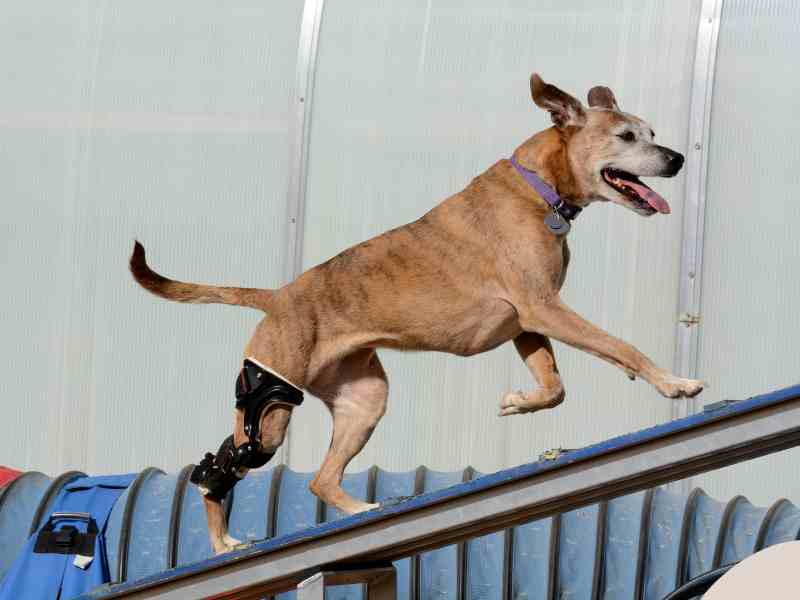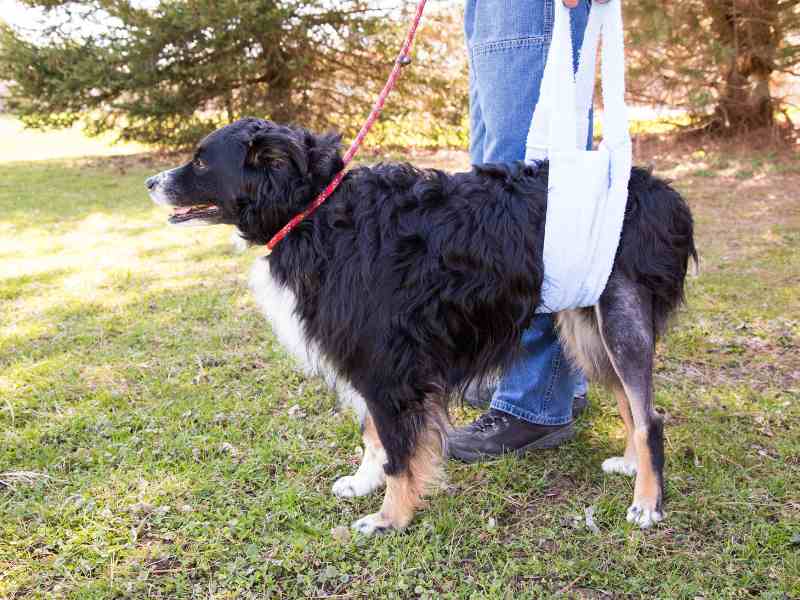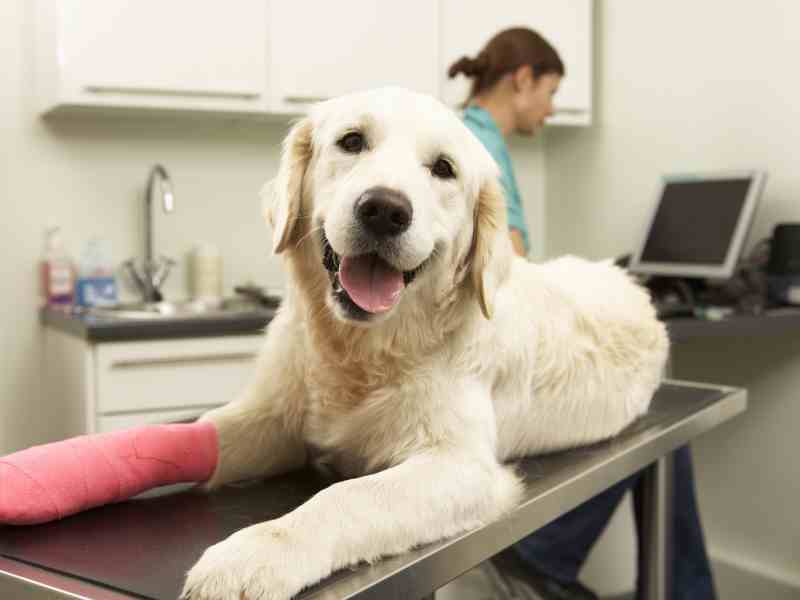If your dog is recovering from an ACL tear, you know that recovery may feel a long way off. In fact, many dogs with ACL (anterior cruciate ligament) tears will navigate the rest of their lives with that recovery. Helping them naturally with supplementation and exercises may sound daunting, but we have great tips to help!
Is It Dog ACL or CCL? The Difference Between CCL and ACL Tears In Dogs
In the dog world, the CCL, or Cranial Cruciate Ligament, is a key player in your dog’s knee health, and it’s similar to the ACL in humans. This crucial ligament stabilizes the knee, allowing your dog to run, jump, and play without problems. When this ligament is compromised, it’s not just a simple sprain—it’s a condition that can significantly impact your dog’s ability to move and enjoy life. The effects can be long-standing, so supporting them through recovery is important.
It’s also important to note that the CCL in dogs differs from the human ACL not just in name but also in its role due to the anatomical differences between humans and dogs. While both ligaments serve to stabilize the knee joint, the CCL injury usually results from gradual wear and tear in dogs, rather than the acute injuries often seen in human athletes. We tend to see this as dogs age, especially. When we talk about ACL tears in dogs, we’re really talking about CCL tears because that’s the correct term for the ligament in dogs. If your dog needs surgery because of this injury, it’s the CCL that’s repaired. So, when your vet talks about surgery for a torn ACL in your dog, they’re actually fixing the CCL.
An injury to this ligament can be a game-changer, often leading to limping, pain, and reduced mobility. That’s where natural supplements and support step in.
What Causes Problems In A Dog’s Cranial Cruciate Ligament?
When it comes to our dogs, we all want to keep them as active and healthy as possible, but sometimes they can get hurt in the process of life. ACL tears, or as we accurately know, CCL tears in dogs usually happen because of two main reasons: a sudden injury or wear and tear over time.
For the sudden injuries, think about a dog having too much fun, maybe chasing a squirrel and taking a bad turn or landing awkwardly after a jump. These kinds of quick, unexpected movements can cause the ligament to tear.
Then there’s wear and tear, which is more gradual. This can happen just from everyday activities over the years, especially in older dogs or dogs carrying extra weight. Being overweight puts more stress on their joints and ligaments, making them more prone to injuries like CCL tears.
Genetics also plays a part. Some dog breeds just have a higher chance of CCL injuries because of the way they’re built or their genetic makeup. Breeds like Labrador Retrievers, Newfoundlands, Bernese Mountain Dogs, and Rottweilers are often predisposed to this type of injury.
What Is Surgery For ACL Injuries In Dogs Like?
Let’s talk about what goes down in surgery for a CCL tear in our best friends. Just hearing “Torn ACL” can scare a lot of pet owners, so it’s important to understand how our dogs can get back to their playful selves.
When a dog has a CCL tear, it means the ligament in their knee is damaged. As we’ve said, this is a bummer for them because it can cause pain and limping, and they can’t enjoy their usual fun activities. That’s where surgery comes into play.
The goal of CCL surgery in dogs is pretty straightforward: to make the knee stable again so that your dog can move around without pain. There are a few different types of surgery vets can do, but the most common one is TPLO, which stands for Tibial Plateau Leveling Osteotomy. Sounds super scientific, right? Let’s break it down.
In TPLO surgery, the vet makes a change to the tibia bone (that’s one of the bones in the leg below the knee). They essentially reposition a part of this bone so the knee can be stable without the CCL doing its usual job. This helps prevent the shin bone from moving forward under the thigh bone, which was what the damaged CCL was supposed to stop.
Vets go for this surgery because it’s been shown to really help dogs get back to normal. It’s like giving their knee a new way to work without the ligament. And while it might sound a bit intimidating, it’s a pretty common procedure that many vets are skilled at doing.
Immediately after surgery, there’s usually a recovery period where your dog might need to take it easy for a while – no crazy running or jumping. This gives their knee time to heal properly. It’s all about getting them back on their paws and ready for more adventures with you.
Long-Term Support For Dogs After CCL Injuries
After your dog has had surgery for a CCL tear, the journey to recovery is crucial, not just in the immediate weeks but even years down the road. Long-term recovery is all about making sure your furry friend stays healthy, active, and free from pain in the long haul. Our goal is to have them live their happiest and most mobile lives for as long as they can.
This means that in the years following surgery, the focus is on keeping that knee as strong and stable as possible. A balance of regular, gentle exercise, maintaining a healthy weight, and providing the right kind of nutritional support can go a long way in doing this.
Bernie’s Marvelous Mobility: Everyday Support For Long-Term Results
At Bernie’s Best, we’re committed to the well-being of our furry family members. We understand the importance of recovery, especially when it comes to something as vital as the CCL, because we have dogs predisposed to CCL tears ourselves. That’s why when we went looking for the best ways to support dogs after ACL injury, we looked for the most current and effective ingredients. We found that what’s always been popular hasn’t always been as effective as other natural ingredients with more recent research. One of the best things we found for recovery in dogs and long-term health support was undenatured type-II collagen, which has shown promising results in managing degenerative joint disease (DJD) in dogs.
Clinical trials have highlighted the efficacy of undenatured type-II collagen in improving joint health in dogs. Undenatured type-II collagen has shown to be more effective than common joint health supplements like glucosamine and chondroitin sulfate, even at smaller dosages. This was key for our inclusion in Marvelous Mobility, which we wanted to create to support canine mobility.
One of the crucial aspects of post-surgical recovery in dogs is managing inflammation, which can contribute to pain and slow down healing. Studies have shown that undenatured type-II collagen can mitigate inflammation and cartilage degeneration after exercise in healthy dogs, suggesting its role in promoting a healthy inflammatory response and potentially aiding in the recovery of joint function post-surgery.
Additionally, we use antioxidants like Astaxanthin and Blueberries, plus the benefits of Green Tea Extract, to alleviate inflammation and minimize oxidative stress. Omega-3 fats, pivotal in our blend, are known to support ligament health by enhancing fibroblast collagen formation, the very cells that build and repair connective tissues.
When you choose Bernie’s Marvelous Mobility, you’re choosing the best ingredients, backed by science, that aim for a future of less pain and improved mobility for your dog. It’s what we want for our dogs and what we love to share with you for yours.


